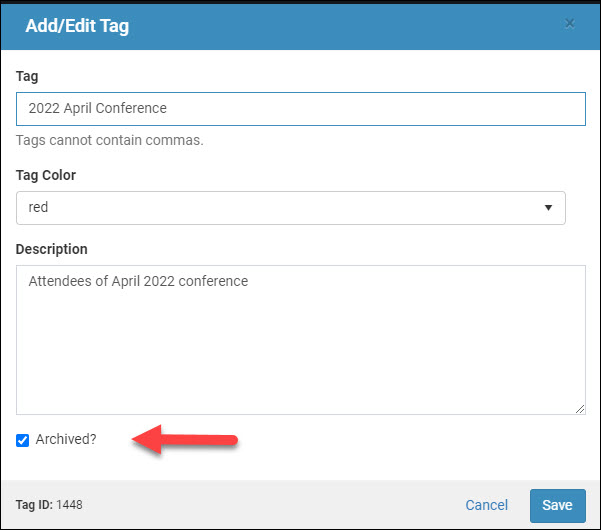Tags allow grouping of clients, people, documents, interactions, referrals, snapshots, events and surveys without customized programming or changes to your existing organization schemes.

Getting Started
- It is best to use tags around groups not represented in SourceLink℠. Common examples can include: people who signed up to receive your newsletter from your website as “Newsletter-web,” and/or a specific email group such as “Chamber members”. Geographic areas not captured by traditional City, State, Zip fields also work well, examples can include “Region X” or “Main Street.”
- Develop your list as a team, so everyone will know the tags. Add a description to the tag so you will continue to know what it is used for.
- Start very narrow. Do not try to add many tags at once.
- Only extraction reports are available by tag name at this time.
Tagging in the Client Record
To tag a client, find the “Client Tag” field in the client record. Start typing and your list of tags will appear.

In addition to client tags, tag fields also appear in people, documents, interactions, referrals, snapshots, events and surveys.
Managing Tags
- Tags can be created, modified, or deleted by going to Setup –> Fields, Lists and Tags –> Tags tab. We recommend adding a detailed description of the tag and a tag color selection.
- For each tag, a count of grouped content is displayed by type
- For a more in-depth review of all tags in your SourceLink account, click the Tag Report button
In addition to the Tag Report mentioned above, filters for each Tag type (Client, Person, Interaction and Snapshot) are available within Scout Reports with the appropriate Tag type available on its matching extraction report (ex: Client Tags are visible on the Client Extraction Report).
Tag Identification Numbers (Tag IDs)
Tag IDs are unique numbers that are assigned to every Tag inside of a SourceLink Pro system. They are most commonly used when working with the SourceLink SiteConnex plugin for web forms and/or The Resource Navigator. You can find the Tag ID by going to Setup -> Fields, List and Tags -> Tags Tab then clicking on the name of the desired Tag you wish to find the ID for. The Tag ID will be located in the lower left of the popup.
Archiving Tags
Tags that are no longer needed can be archived. The archived tag will still show up on client records and in reports, but lets users know it is no longer relevant.
To archive a tag, go to Setup>Fields, Lists and Tags>Tags tab.
Select “edit” next to the tag that will be archived. Check the “Archived?” box.

The archived tag will be identified on the tags list and will not be available for future use.

